A table of values of a function f with continuous gradient is given Find C ∇f dr, where C has the parametric equations below x = t4 1, y = t5 t ,0 ≤ t ≤ 1;Algebra Use a Table of Values to Graph the Equation y=x2 y = x − 2 y = x 2 Substitute −2 2 for x x and find the result for y y y = (−2)−2 y = ( 2) 2 Solve the equation for y y Tap for more steps Remove parentheses y = ( − 2) − 2 y = ( 2) 20, so and the range is { y y ` x ±3 ±2 ±1 0 1 g(x ) 2 0 2 4 6 62/87,21 This is a piecewise defined function Make a table of values Be sure to include the domain values for which the function changes Notice that both functions are linear The graph will cover all possible values of x, so the domain is all real numbers
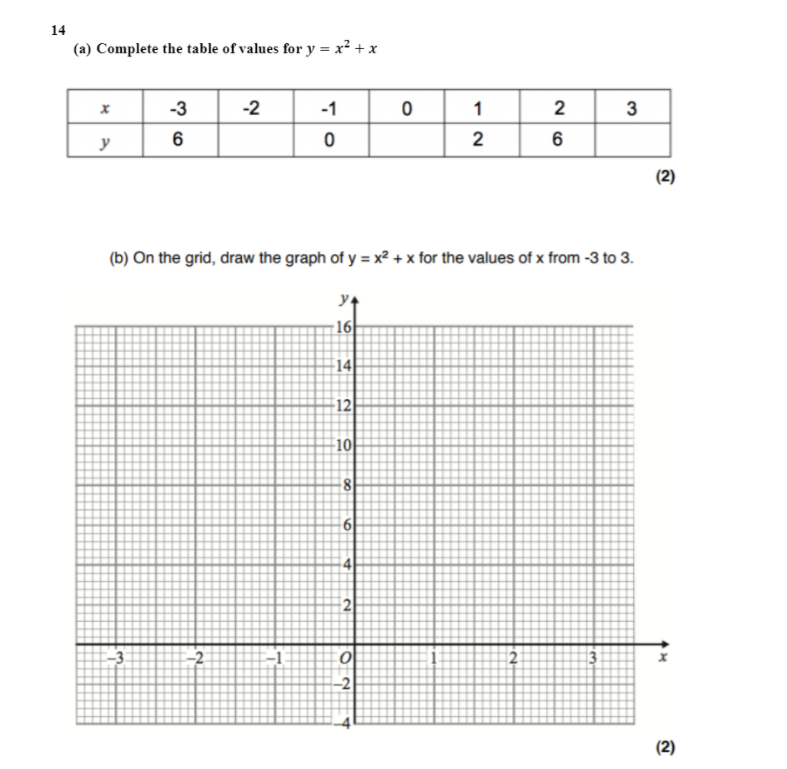
Solved 14 A Complete The Table Of Values For Y X X X Chegg Com
Complete the table of values for y=x^2+1
Complete the table of values for y=x^2+1-(ii) find the value of x for which x = 45 2 y 10 x 23 4 5 6 y 92 94 104 116 The table shows experimental values of the variables x and y which are related by the equation y # Abx, where A and b are constants (i) Use the data above in order to draw, on graph paper, the straight line graph of lg y against x, using 1 cm for 1 unit of xSolve (a) (i) Complete the table of values for y = −x^2 5x x 1 0 1 2 3 4 5 6 y 6 4 4 0 (ii) On the grid, draw the graph of y = −x^2 5x for −1
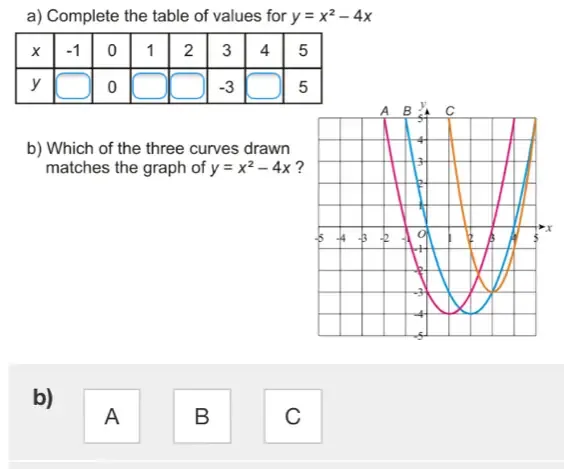



Snapsolve
Circle the equation of a line that is parallel to y = 5x – 2 1 y = 2x – 5 y = 5x 2 y = 3x 2 y = − 1 5 x 2 wwwjustmathscouk Straight Line Graphs (F) Version 3 January 16 4 (a) Complete the table for y = 3x 1 2 (b) On the grid draw the graph of y = 3x 1 for values of x from 3 to 31 f(x) = √x The x values are 0, 1,4 and 9 The corresponding y values that I got are 0, 1, 2 and 3 2 g(x) = 1/4√ x The x values are 0, 1, 4, and 9 The corresponding y values that I Programming Write a program (pseudocode) that would calculate and display the results for the multiplication table for values ranging from 1 to 100Definitions 131 Let x,y ∈ B 1 Addition is defined by the table x y xy 1 1 1 1 0 1 0 1 1 0 0 0 2 Multiplication is defined by the table x y x·y 1 1 1 1 0 0 0 1 0 0 0 0 3 The compliment is defined by the table x x 1 0 0 1 Discussion If you think of the 1 as "true" and the 0 as "false", as we used in Logic, you should
1 _ (2 x, y) → (1 _x 2, y) Reflection in the xaxis (1 _x 2, y) → (1 _x 2, y) Vertical translation of 3 units up (1_x 2, y) → (1 _x 2, y 3) Choose key points on the graph of y= √ __ x and use the general mapping notation (x, y) → (_1 2 x, y 3) to determine their image points on the function y 3 = √ ___ 2x (0, 0) → (0, 3) (1, 1) → (05, 2) For example, \(y = 2x \{1 \lt x \lt 3\}\) would graph the line \(y = 2x\) for \(x\) values between 1 and 3 You can also use range restrictions For example, \(y=x^{2} \{y\gt3\}\) would only show the part of the parabola where \(y\)values are greater than 3You'll see how to set up a table, choose appropriate xvalues, plug those values into the equation, and simplify to
Let's find the value of y for each x using the given equation y = {2 \over 3}x 1 x = 6 x = 3 x = 0 x = 3 x = 6 Put these y values together with the x values in a table Plot the points in the Cartesian plane and connect the dots to show the graph of the lineIn order to graph linear function, we can make use of the table of values to map out the corresponding values of x and y for the given line An equation is essentially a representation of the relationship of x and y values for any line A table of values is basically a table which lists the values of y, given the x values, for the given lineTo draw this graph, we need to think of the values in this table as coordinates So the first point will have coordinates \(\text{(2,~1)}\), the second will have coordinates \(\text{(1,~2




Solved 12 2 A Complete This Table Of Values For Y X2 2x Chegg Com
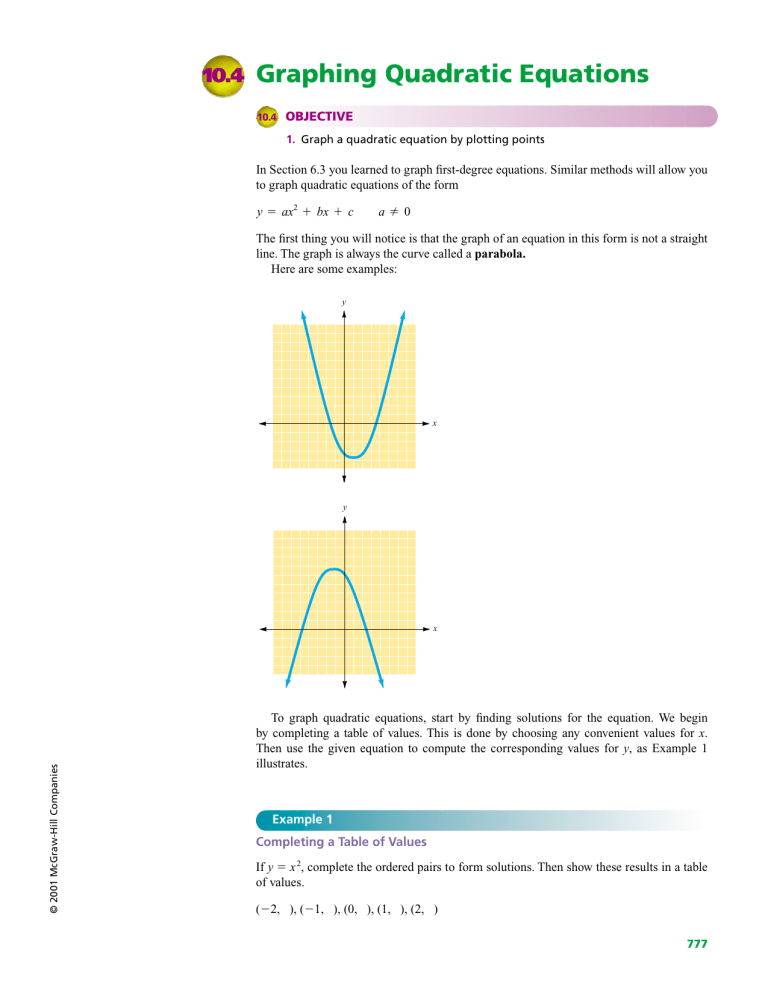



N1 Stre 10 4
Once you know the pattern that relates the xand yvalues, you can find a yvalue for any xvalue that lies on the line So if the rule of this pattern is that each ycoordinate is twice the corresponding xvalue, then the ordered pairs (15, 3), (25, 5), and (35, 7) should all appear on the line too, correct?Substitute the values of a a, d d, and e e into the vertex form a ( x d) 2 e a ( x d) 2 e ( x 0) 2 − 1 ( x 0) 2 1 ( x 0) 2 − 1 ( x 0) 2 1 Set y y equal to the new right side y = ( x 0) 2 − 1 y = ( x 0) 2 1 y = ( x 0) 2 − 1 y = ( x 0) 2 1The given coordinate is ( 2, 1 ) So x = 2 and y = 1 are on the curve Substitute and solve Parabolas of the form y = a(xb) 2 Example Complete the table of values for the equation y= (x2) 2 Plotting these points and joining with a smooth curve gives This time,the graph is symmetrical when x=2 The turning point is (2,0) The axis of




Linear Exponential And Quadratic Models Read Algebra Ck 12 Foundation




Solved 0 Pts View The Graph Of The Quadratic Function Y F Chegg Com
Question complete the table of values below for the equation y = 3x 2 X y 1 0 1 2 Found 2 solutions by Earlsdon, jim_thompson5910 The x2 is positive so the general graph shape is ∪ Consider the generalised form of y = ax2 bx c The bx part of the equation shifts the graph left or right You do not have any bx type of value in your equation So the graph is central about the yaxis The c part of the equation is of value 1 so it lifts the vertex up from y=0 to y=1Start with a table of values You can choose different values for x, but once again, it's helpful to include 0, some positive values, and some negative values If you think of f(x) as y, each row forms an ordered pair that you can plot on a coordinate grid Plot the points Answer Since the points lie on a line, use a straight edge to draw the line
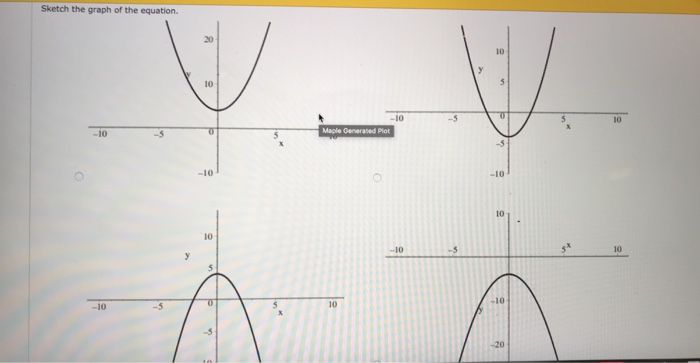



Solved Make A Table Of Values For The Equation Y X2 4 4 Chegg Com
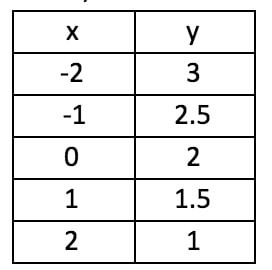



Graph A Linear Equation Using A Table Of Values Studypug
Question A table of values of a function f with continuous gradient is given Find C ∇f dr, where C has the parametric equations below x = t4 1, y = t5 t ,0 ≤ t ≤ 11 Make a table of values for each relation, using integer values of x from 3 to 3 a) y xx2 b) y x2 2 c) y 2 x2 3 d) y x2 e) y 05x2 3 2 Graph all the relations in step 1 on the same set of axes Plot each set of ordered pairs and draw a smooth curve through the points 3A construct a table of values using b draw a graph 3 x 3 y 2x 3 TINspire CAS keystrokes TINspire CAS screens Begin with a Graphs & Geometry page, and enter the function 2x 3 into f1(x) Press ¸to plot the graph Press CTRLT to show the table of values for this function and scroll up to show values between 3 and 3




Complete The Table Of Values For Y 3x 1 Brainly Com
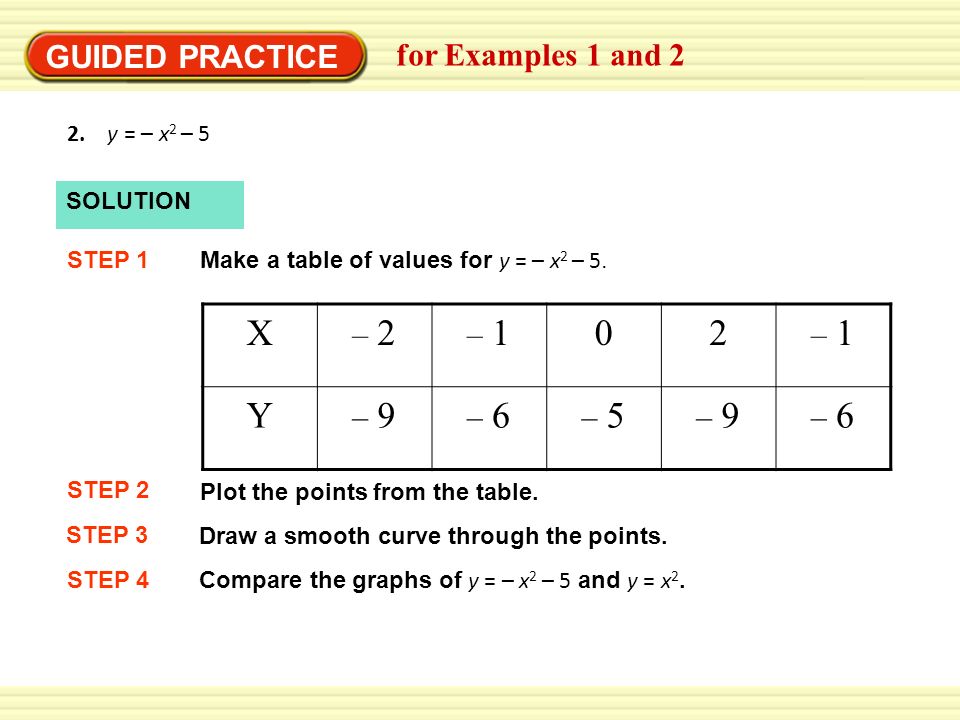



Warm Up Lesson 4 1 Find The X Intercept And Y Intercept Ppt Video Online Download
GUIDED PRACTICE for Examples 1 and 2 2 Tell whether the table of values represents a linear function, an exponential function, or a quadratic function ANSWER exponential function 0 1 y 2 x – 2 – 1 008 04 10Ten decimal place values for selected values of the argument appear in Table 21 Table 21 Ten decimal place values of erf x x erf x x erf x 00 25 05 0549 30 10 35 15 40 45 12Y = 1 2x − x² y = 4 ÷ x y = 2 ÷ (x 2) 1 Complete the table of values for the graph of y = 2x 1 2 Complete the table of values for the graph of y = 2x − 2 3 Complete the table of values for the graph of y = ½x 2



1




Graph The Linear Equation Yx 2 1 Draw
Variables Let y be the output value and x be the input value Equation y = 5 2 ⋅ x An equation is y = 5 2x Step 2 Substitute 53 for y Then solve for x y = 5 2x Write the equation 53 = 5 2x Substitute 53 for y 48 = 2x Subtract 5 from each side 24 = To find the value of and we have to find the proportionality constantThe y in terms of x is and positive value of Given From the given problem y is inversely proportional to the square of x A table of values for x and y is shown From the table (a) As we know that, y is inversely proportional to the square of x, Here k is proportionality constantHow can you compare relations of the form y = ax2 bx c?



Quadratics Graphing Parabolas Sparknotes
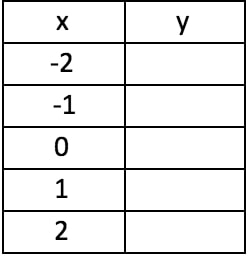



Graph A Linear Equation Using A Table Of Values Studypug
To graph a linear equation, you could make a table of values to plot, but first you'll need to know how to make the table Take a look at this tutorial!Look to see what happens Evaluate y = ex 1 for the following values of x Round to the nearest thousandth x = −2, y ≈ x = 1, y ≈ x = 2, y ≈




A Complete The Table Of Values For Y X 2 4x Brainly Com




Graph The Linear Equation Yx 2 1 Draw
1 2 3 4 5 6105 05 1 We know that cos x is periodic with period 2 That means the graph just repeats forever and ever to the left and right5 5 10 15Evaluate y = − 15x for different values of x, and create a table of corresponding x and y values Since the coefficient of x is − 15, it is convenient to choose multiples of 2 for x This ensures that y is an integer, and makes the line easier to graph (0,This is the graph of \(y = 3x 1\) Sketching straight line graphs If you recognise that the equation is that of a straight line graph, then it is not actually necessary to create a table of values




Complete The Tables Of Values For Y 6 X Brainly Com




B The Graph Of Y X 2 1 Is Drawn Onthe Axes On The Left Use The Graph To Estimate Thevalues Of X Brainly Com
Example 1 recognising cubic graphs Identify the correct graph for the equation y =x32x2 7x4 y = x 3 2 x 2 7 x 4 Identify linear or quadratic or any other functions Graph A is a straight line – it is a linear function Graph B is a parabola – it is a quadratic functionX y Complete the table for and graph the resulting line x y Sheet # 1503 Name _____ Date _____ Functions and Relations – Graphing using a table of values Class PreAlgebra Complete the table for and graph the resulting line x y4 2 0 2 4 Complete the table for and graph the resulting line x y Complete the table for andThis video provides an example of graphing a line solved for y using a table of valuesComplete Video List at http//wwwmathispower4ucomSearch by Topic at
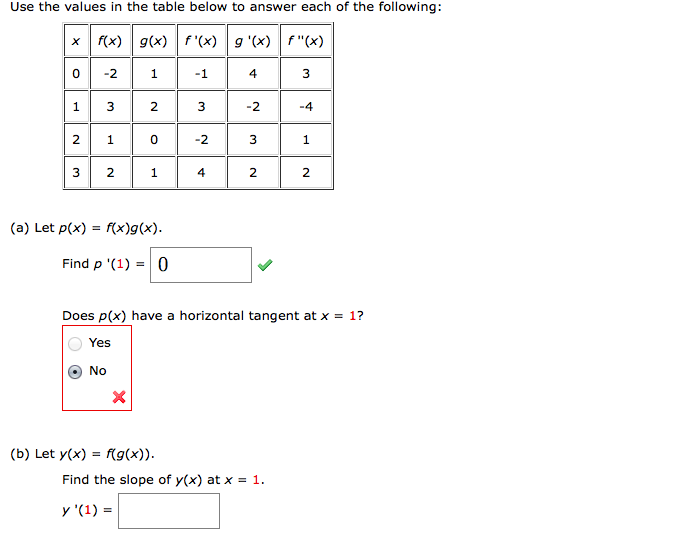



Solved Use The Values In The Table Below To Answer Each Of Chegg Com
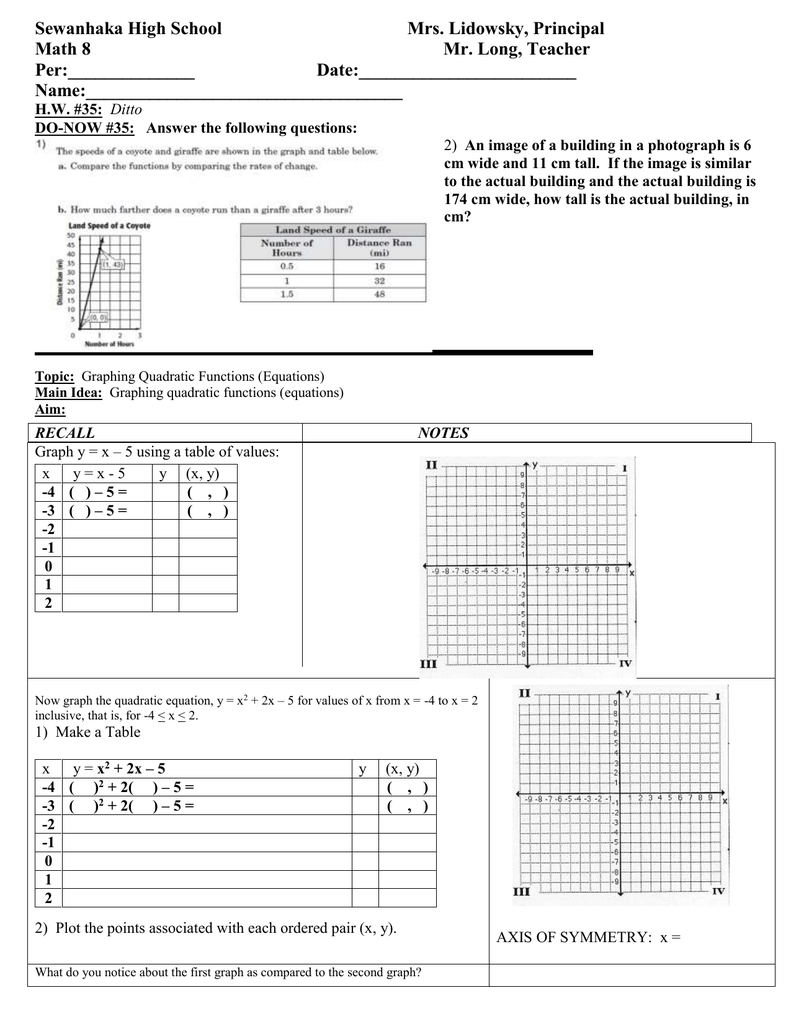



Math 8 Lesson Plan 35 Graphing Quadratic Equations Class Outline For Students Doc
After substituting those values into the equation y = 2x 1, I found my y values to be 3, 1, and 5 Therefore, the ordered pairs that I found on my graph were (2,3), (0,1), and (2,5) I plotted those points on my graph I then used my ruler and drew a straight line through those points This is the line for the equation, y = 2x 1Calculates the table of the specified function with two variables specified as variable data table f(x,y) is inputed as "expression" (ex x^2*yx*y^2 )Observe that when the function is positive, it is symmetric with respect to the equation $\mathbf{y = x}$Meanwhile, when the function is negative (ie, has a negative constant), it is symmetric with respect to the equation $\mathbf{y = x}$ Summary of reciprocal function definition and properties Before we try out some more problems that involve reciprocal functions, let's




Make A Table Of Values For The Equation Then Graph The Equation Y X 2 1 Complete The Table Brainly Com




Example 1 Graph A Function Of The Form Y Ax 2 Graph Y 2x 2 Compare The Graph With The Graph Of Y X 2 Solution Step 1 Make A Table Of Values For Ppt Download
The table shows some values for the equation y = x3 – 2x for –2 ≤ x ≤ 2 (a) Complete the table of values 3 (b) On the grid below, draw the graph of y = x3 – 2x for –2 ≤ x ≤ 2 4 The table shows some values for the function y = 11x – 2x2 – 12 for 15 rows The equation $$ y = 2x $$ expresses a relationship in which every y value is double the xTo do this I am going to use a table of values I am going to choose some values for the variable x, calculate the corresponding value of y and then record my results in a table So, for example when x = 1 then y = 2 1 1 = 3 and when x = 2 then y = y = 2 2 1 = 5 Here is my table including these two values of x and a few more




Inverse Relations To Find An Inverse Mathamaticaly There Is One Simple Rule Switch The X And Y Xy Ppt Download
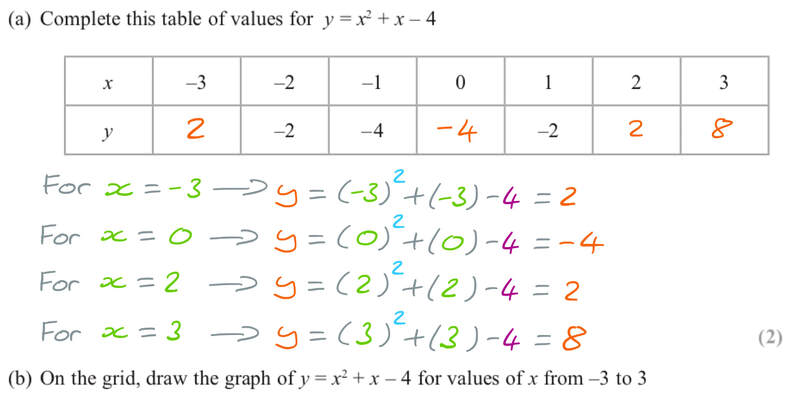



Q3 Answers Paper 3 November 18 Edexcel Gcse Maths Higher Elevise
Be defined as functions whose yvalue is the product of two linear factors—the form y = (ax c)(bx d), where a ˜ 0 and b ˜ 0 The power of this form is that it connects polynomials to products of linear factors For example, you can also represent y = 2x2 3x 2 as y = (2x 1)(x 2) The factored form can help youY=1/x with table more values y=1/x with table more values Log InorSign Up 🏆 x 1 x − 5 − 4 − 3 − 2 − 1 0 1 23 2 1 1 2 3 5 10 15 x y A graph of the exponential function y = ex It is important to note that as x becomes larger, the value of ex grows without bound We write this mathematically as ex → ∞ as x → ∞ This behaviour is known as exponentialgrowth




Completing A Table Of Values Youtube



Y X 3
The following table of values represents points x comma y on the graph of a linear function Determine the yintercept of this graph So just as a reminder of what the yintercept even is, if you imagine a linear function or a line if we're graphing it, if we imagine a line, so let's say that is our line right over thereIn a table for selected values of x, often equally spaced, and extend the function to values of x not in the table For example, given numbers from a table of logarithms, estimate the logarithm of a number xnot (xi)=yi,i=0,1,2 Thus, is the Lagrange formula P2(x) unique?•This table shows values of g(x, y) Table 2 Math 114 – Rimmer 142 – Multivariable Limits LIMITS AND CONTINUITY • Notice that neither function is defined at the origin – It appears that, as (x, y) approaches (0, 0), the values of f(x, y) are approaching 1, whereas the values of g(x, y) aren't approaching any number
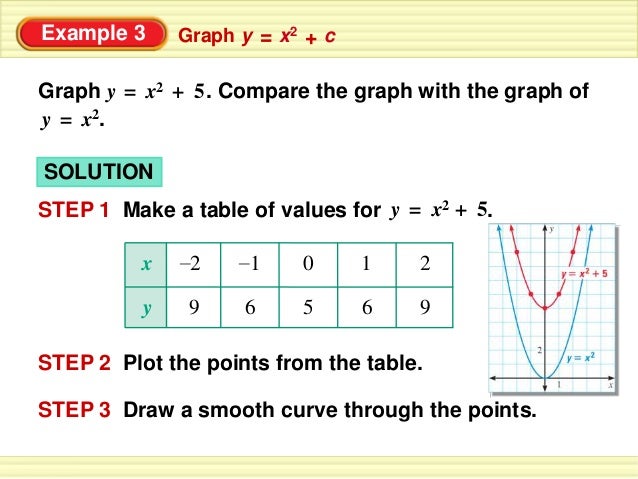



10 1
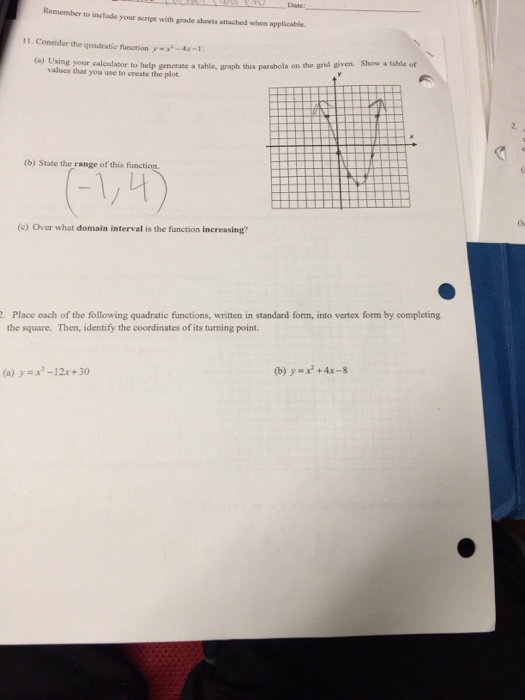



Solved Consider The Quadratic Function Y X 2 4x 1 Chegg Com
Consider the table of values for the linear function y = 3x — 2 Difference y=3x2 Ay The x values in this table are in increments of 1, that is Ax = 1 To calculate the first differences, denoted by Ay, we will compute the changes or differences in the y values of the function The first differences are equal, with a constant value of 3




Solved 14 A Complete The Table Of Values For Y X X X Chegg Com




The Graphs Of Quadratic Equations A Quadratic Equation Is An Equation That Has A X 2 Value All Of These Are Quadratics Y X 2 Y X Y X Ppt Download




Ex 1 Graph A Linear Equation Using A Table Of Values Youtube




Graph Of Y X 2 1 And Sample Table Of Values Download Scientific Diagram



Solution Draw A Graph Of The Parabola Y X 2 4x 1 Use 5 X 1 To Make Your Table Of Values What Is Approximately The Value Of Y When X 1 5 0 5
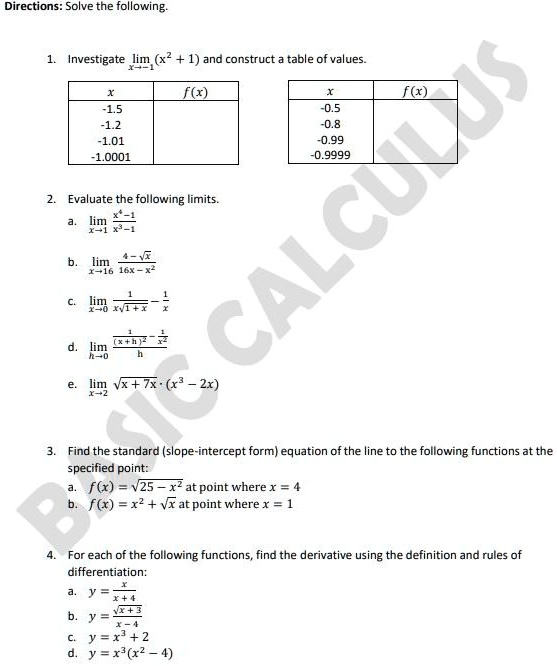



Solved Directions Solve The Following Investigate Lim X2 1 And Construct Table Of Values 1 5 0 5 1 2 1 01 0 99 0001 0 9999 Evaluate The Following Limits Calcxz Lim 16x X2 4 Iix Rx7




Understanding The Graphs Of A Parabola Ck 12 Foundation
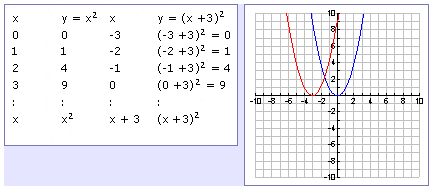



Transformations Left Or Right




Solved Make A Table Of Values For The Equation Y 2 4 H Chegg Com
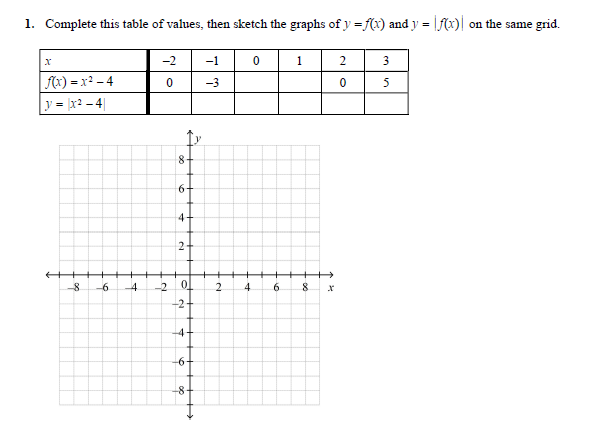



Solved 1 Complete This Table Of Values Then Sketch The Chegg Com



1



Help Me With This Construct A Table Of Values For The Function F X X 1 Is The Restricted Domain 0 0 5 1 1 5 2 2 5 3 Is This A One To One Function If It Is A One




Here Is A Table Of Values For Y F X Mark The Statements That Are Truea The Domain For F X Is The Brainly Com



Help Me With This Construct A Table Of Values For The Function F X X 1 Is The Restricted Domain 0 0 5 1 1 5 2 2 5 3 Is This A One To One Function If It Is A One
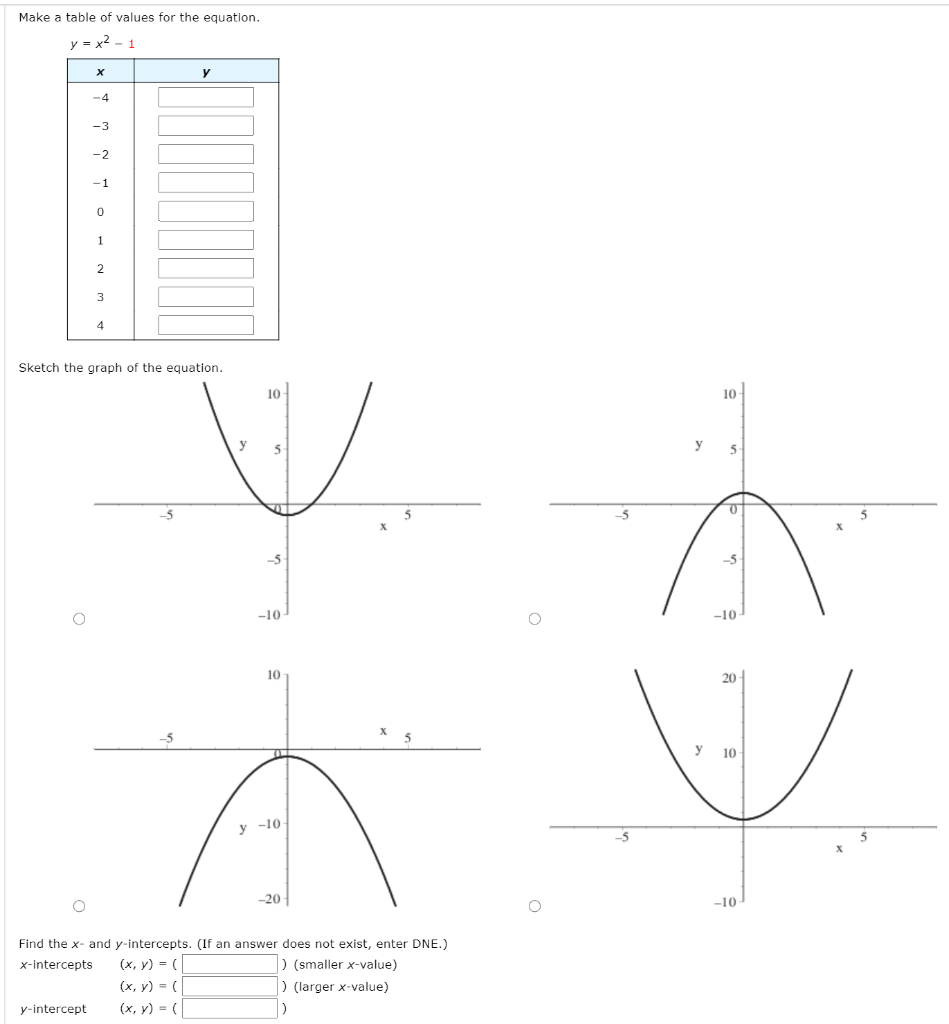



Solved Make A Table Of Values For The Equation Y X2 1 H Y Chegg Com
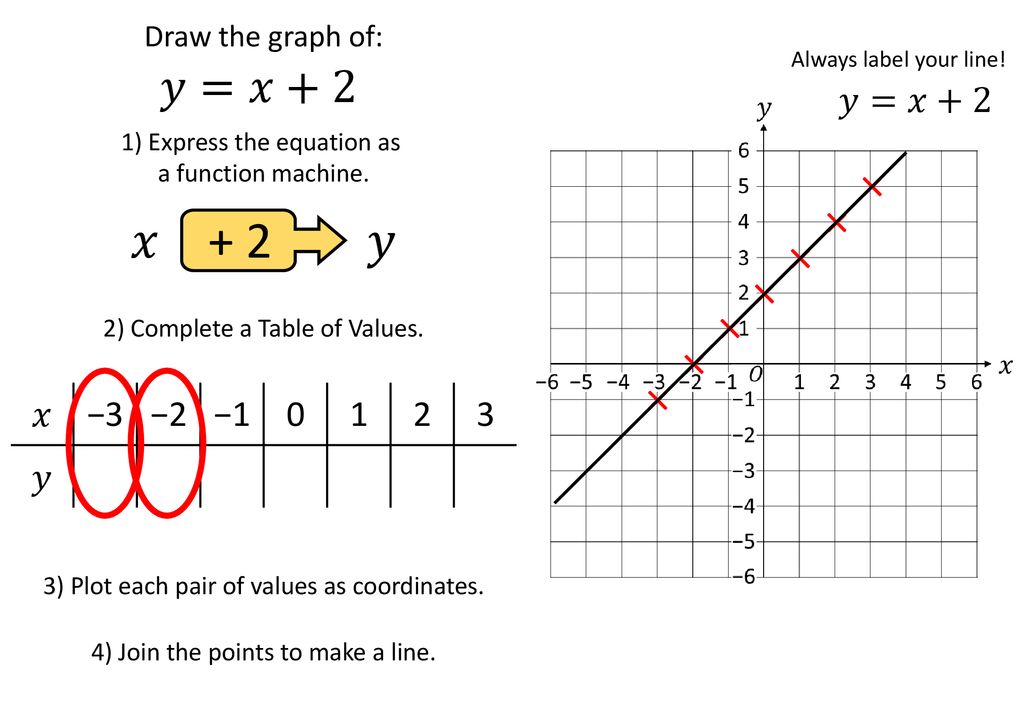



Linear Graphs Tables Of Values Method Complete Lesson Ppt Download




How Do You Graph Y X 2 Using A Table Socratic



Complete The Table Of Values For Y X2 3x 1 2 Gauthmath
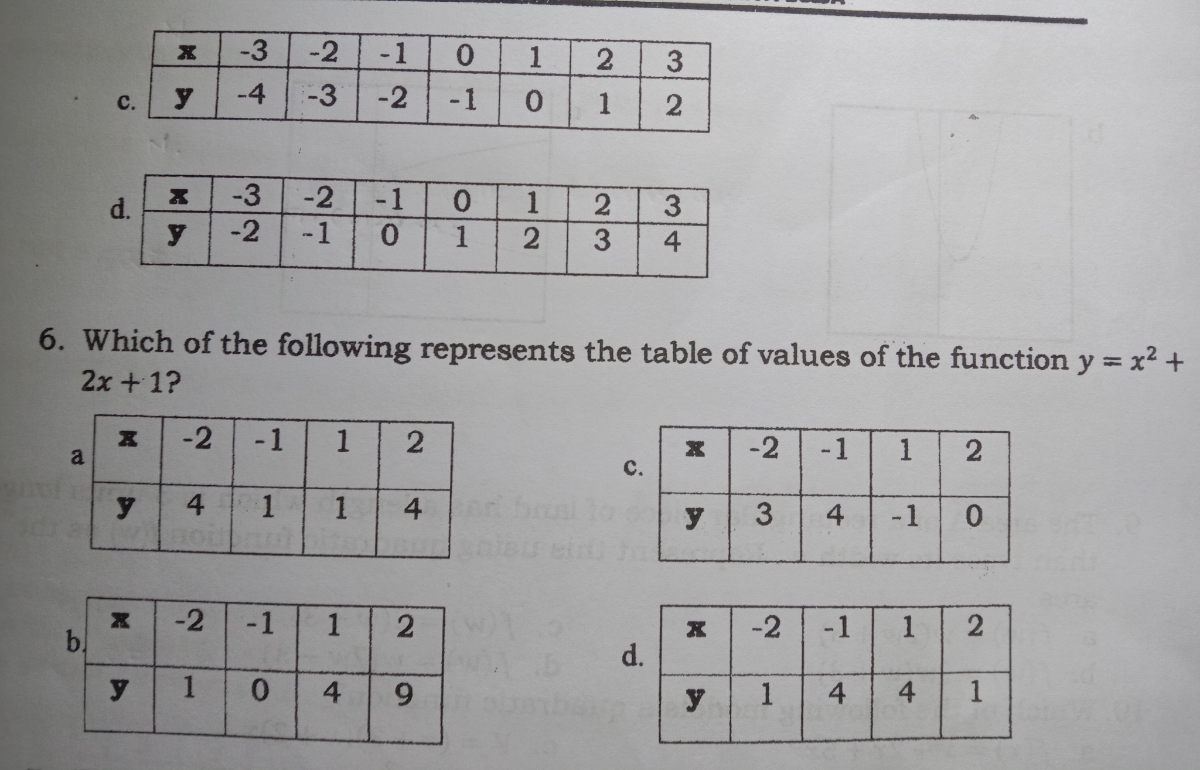



Answered 1 Which Of The Following Functions Bartleby




A Complete The Table Of Values For Y X X 2 3 2 1 0 1 2 3 H U 10 2 Brainly Com




Make A Table Of Values For The Equation Y X 2 4 If X 4 3 2 1 0 1 2 3 4 Sketch The Graph Of The Equation Find The X And Y Intercepts Study Com




Graph The Linear Equation Yx 2 1 Draw
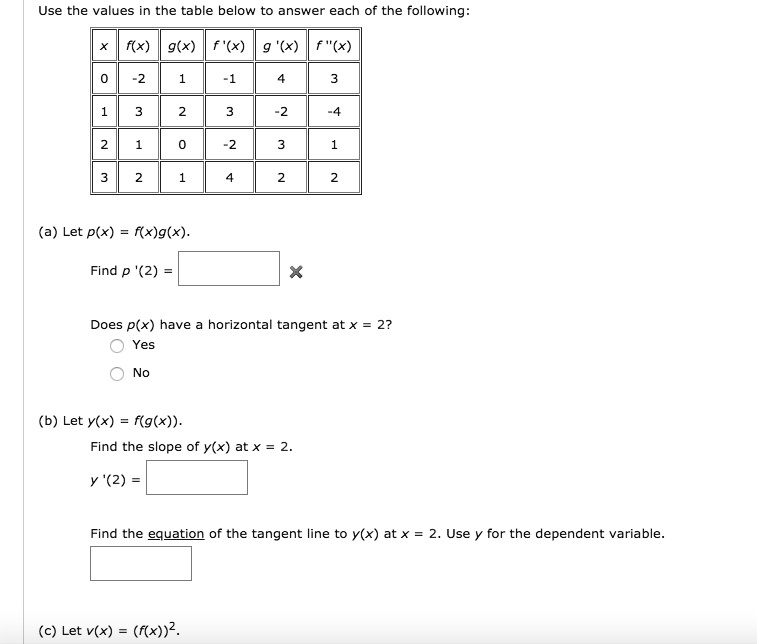



Solved Use The Values In The Table Below To Answer Each Of The Following A Let P X F X G X Find P 2 Does P X Have Horizontal Tangent Atx 2 Yes No B Let
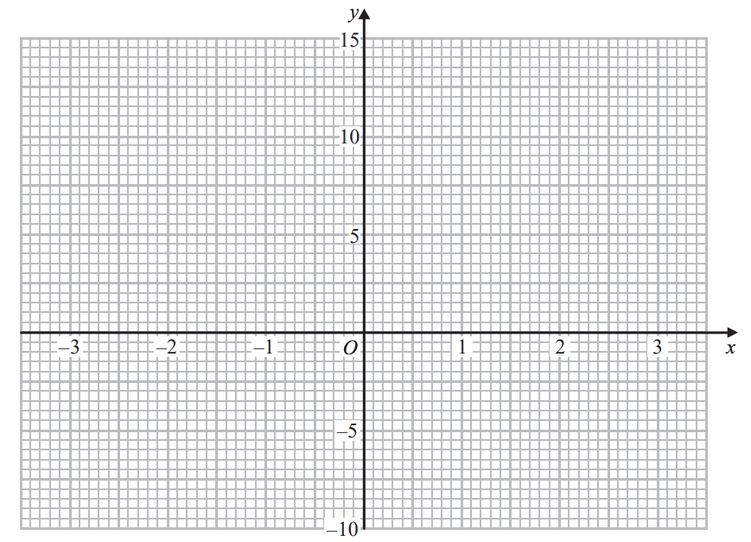



Q3 Question Paper 3 November 18 Edexcel Gcse Maths Higher Elevise




Snapsolve



Solution Graph The Quadratic Equation And Complete A Table Of Values Y X 2 3x My Answer This Is What I Was Given X 3 X 2 And This Is Where I Am



Make A Table Of Solutions And Graph The Equation X Y 6 Mathskey Com




Graph Y X 2 1 Parabola Using A Table Of Values Youtube




Given The Function Y X 2 Copy And Complete The Table Below For The Values Of This Function Then Sketch These Points On A Coordinate Plane Warm Up Ppt Download



A Complete The Table Of Values For Y X2 2x 3 B I W Gauthmath
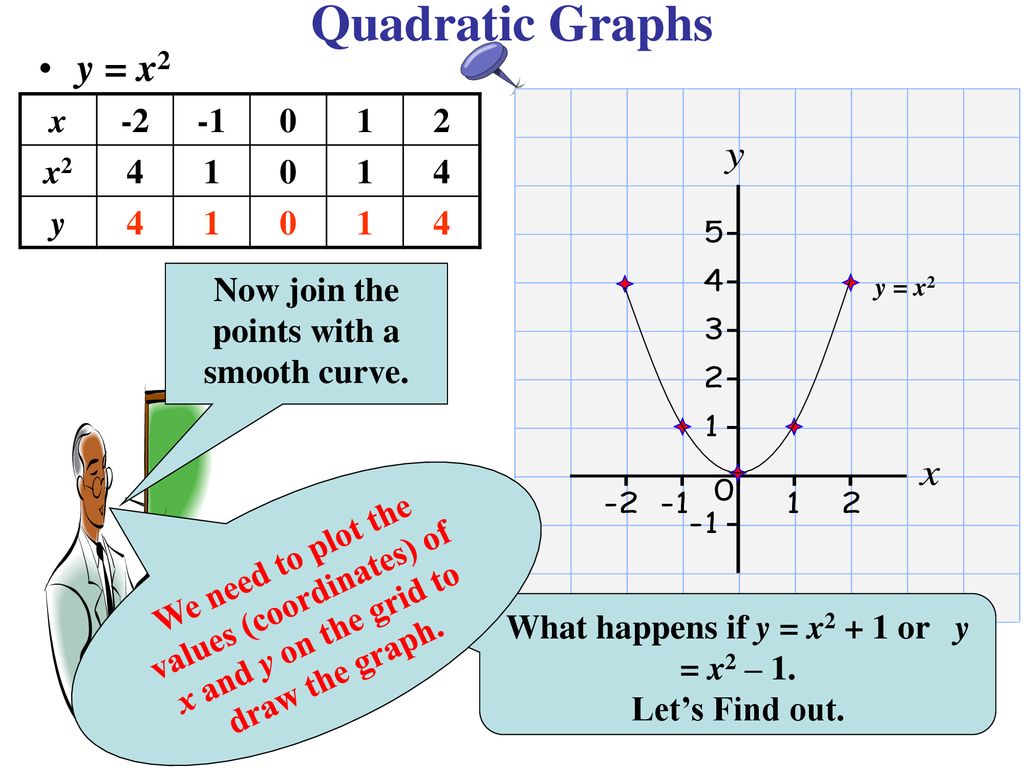



Quadratic Graphs Parabolas Ppt Download



Rasmus Math Graphing With Ordered Pairs Coordinates Lesson 2
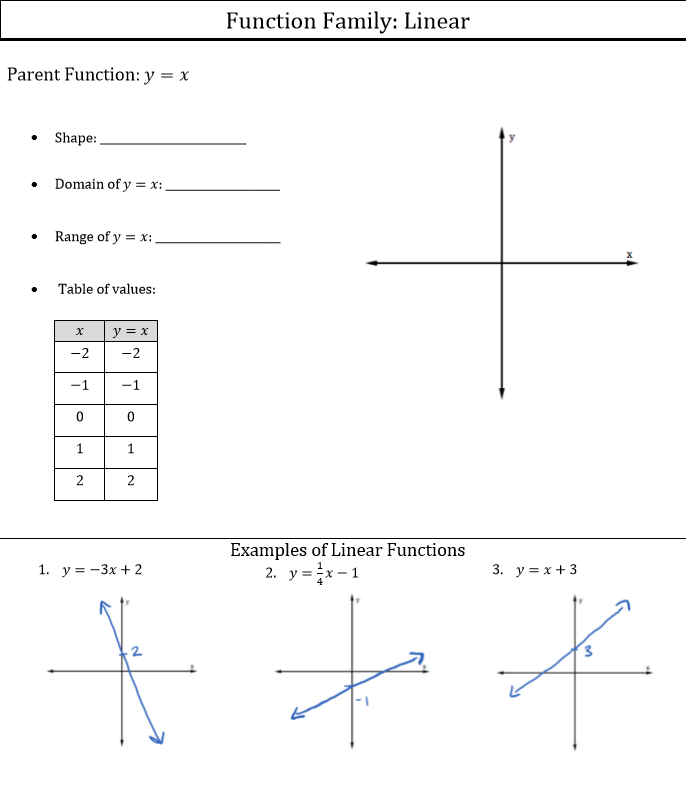



Solved Function Family Linear Parent Function Y Shape Chegg Com



Name Use A Table Of Values To Graph



A Complete The Table Of Values For The Family Of Gauthmath



C Represent The Following Quadratic Functions Usi Gauthmath




Straight Lines Objectives E Grade Plot The Graphs




Ppt Absolute Value Review Powerpoint Presentation Free Download Id




Fill In The Table Of Values For The Equation Y X 2 Brainly Com




Example 1 Graph A Function Of The Form Y Ax 2 Graph Y 2x 2 Compare The Graph With The Graph Of Y X 2 Solution Step 1 Make A Table Of Values For Ppt Download




Example 1 Graph Y Ax 2 Where A 1 Step 1 Make A Table Of Values For Y 3x 2 X 2 1012 Y Plot The Points From The Table Step Ppt Download



2




Solution Complete A Table Of Values For Quadratic Function Y X 2 2x 4




Ex Graph An Absolute Value Function Using A Table Of Values Youtube
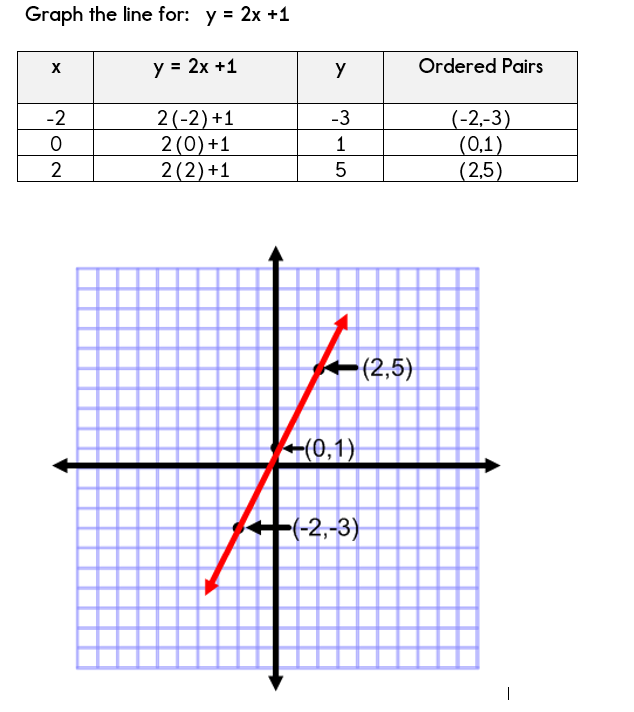



Using A Table Of Values To Graph Equations




Match The Equation With The Appropriate Table Of Values Plz Help Asapthe Equations Brainly Com




Look At The Table Of Values Below X Y 1 1 2 3 3 5 4 7 Which Equation Is Represented By The Brainly Com
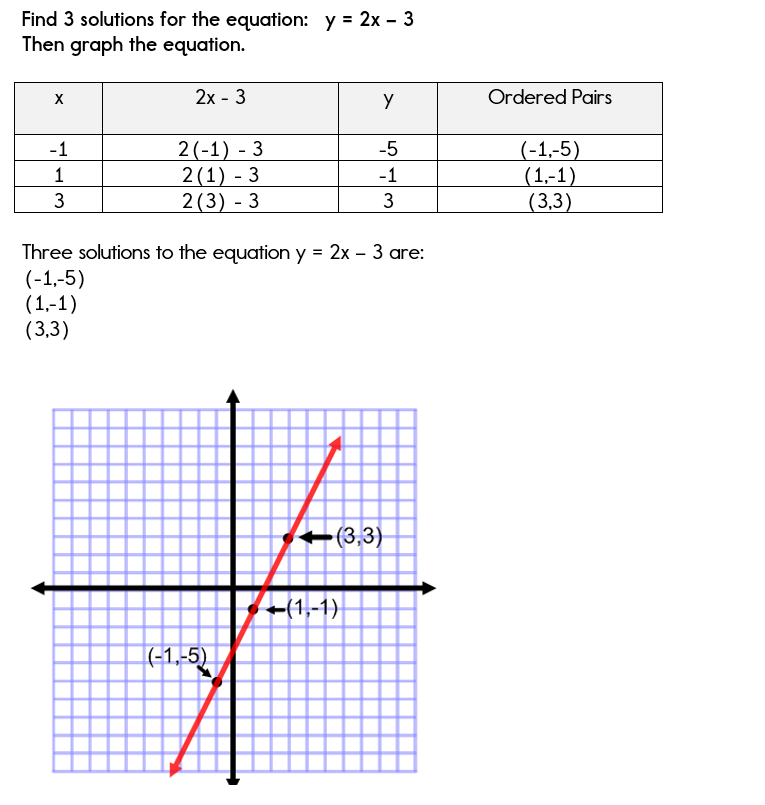



Using A Table Of Values To Graph Equations
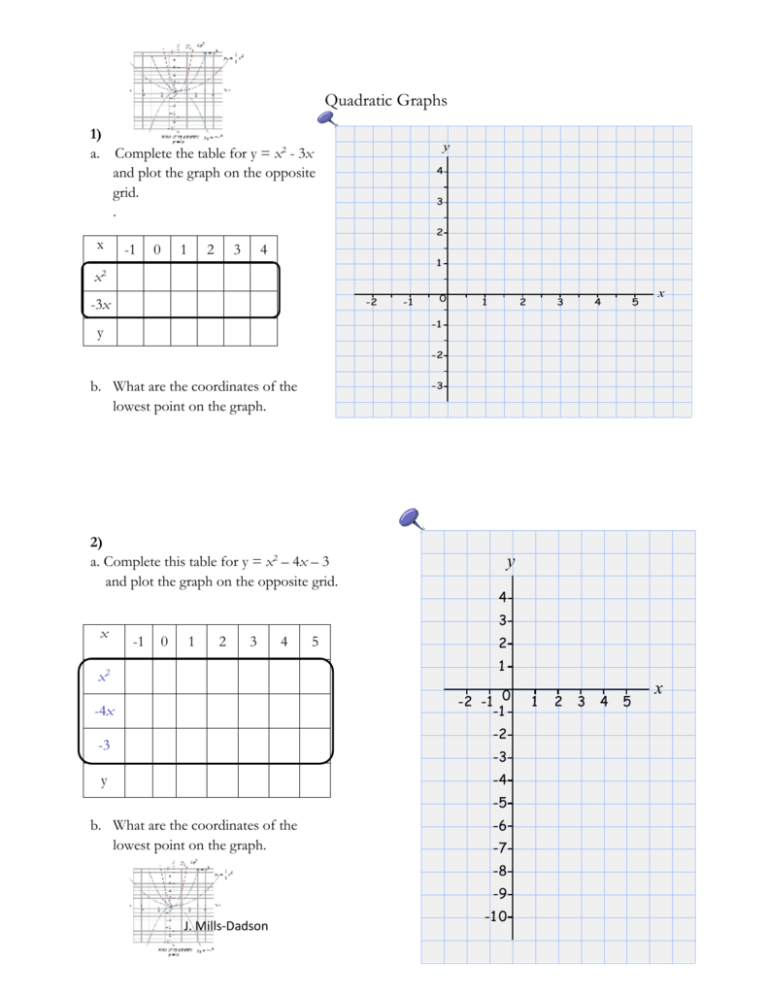



Quadratic Graphs 1 A Complete The Table For Y X2




Question Video Completing Tables Of Values For Functions Nagwa
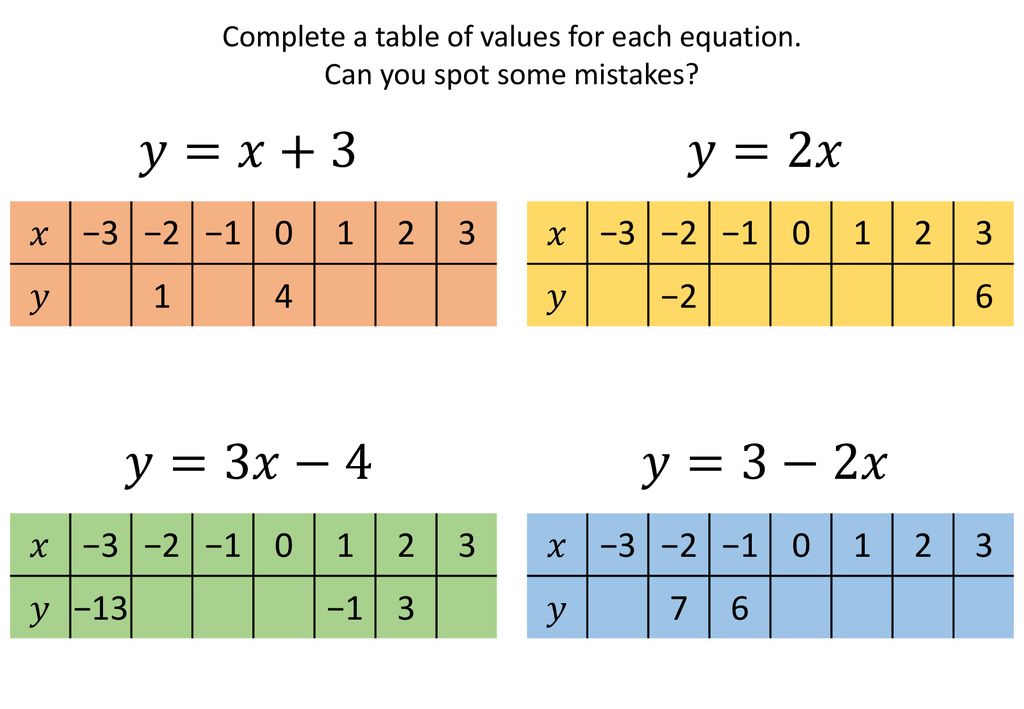



Linear Graphs Tables Of Values Method Complete Lesson Ppt Download



1



What Is The Table Of Values For Y X 2 Socratic




Solved Make A Table Of Values Y X 4 H Y 3 2 1 0 1 N 3 Chegg Com
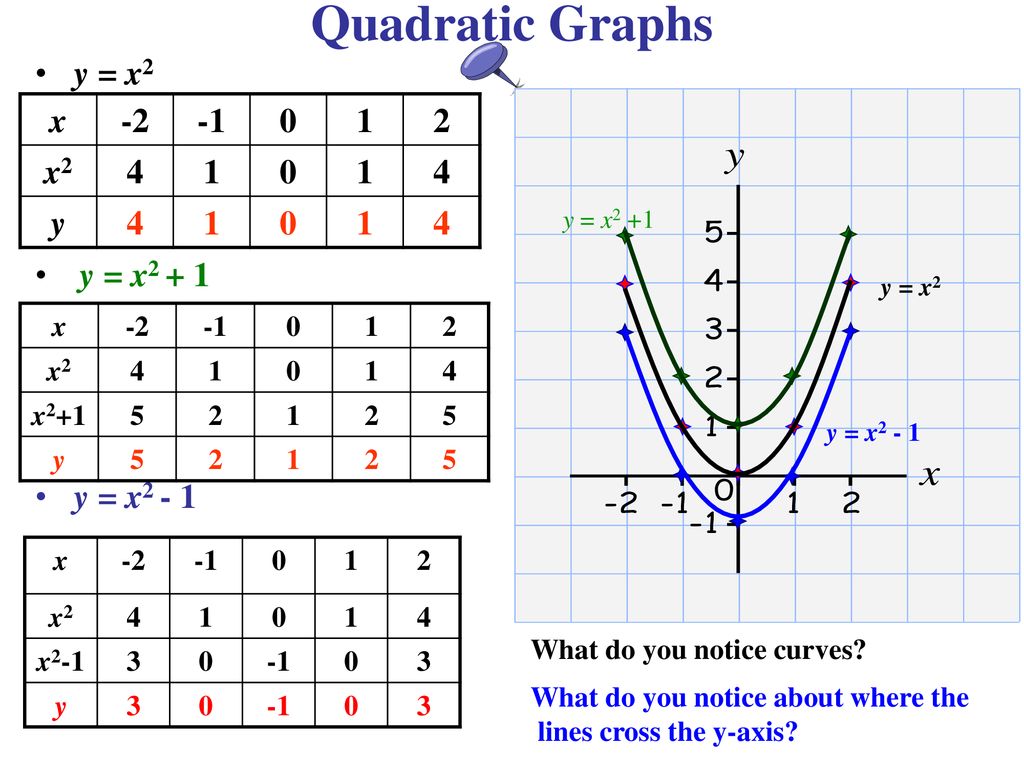



Quadratic Graphs Parabolas Ppt Download
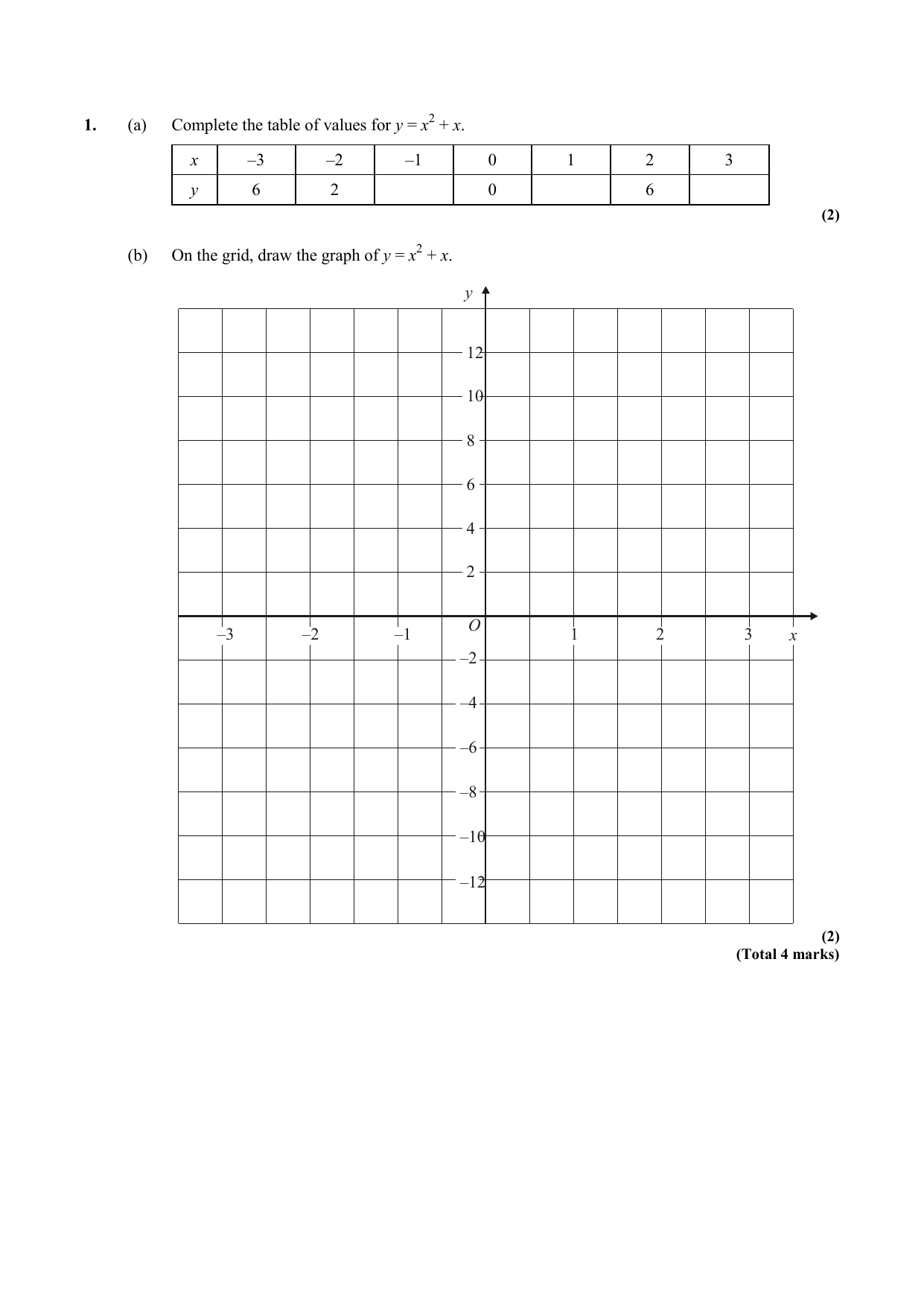



G8 Drawing Quadratic Graphs 2




Graph Y X 2 Youtube



Untitled Document




Example 1 Graph A Function Of The Form Y Ax 2 Graph Y 2x 2 Compare The Graph With The Graph Of Y X 2 Solution Step 1 Make A Table Of Values For Ppt Download
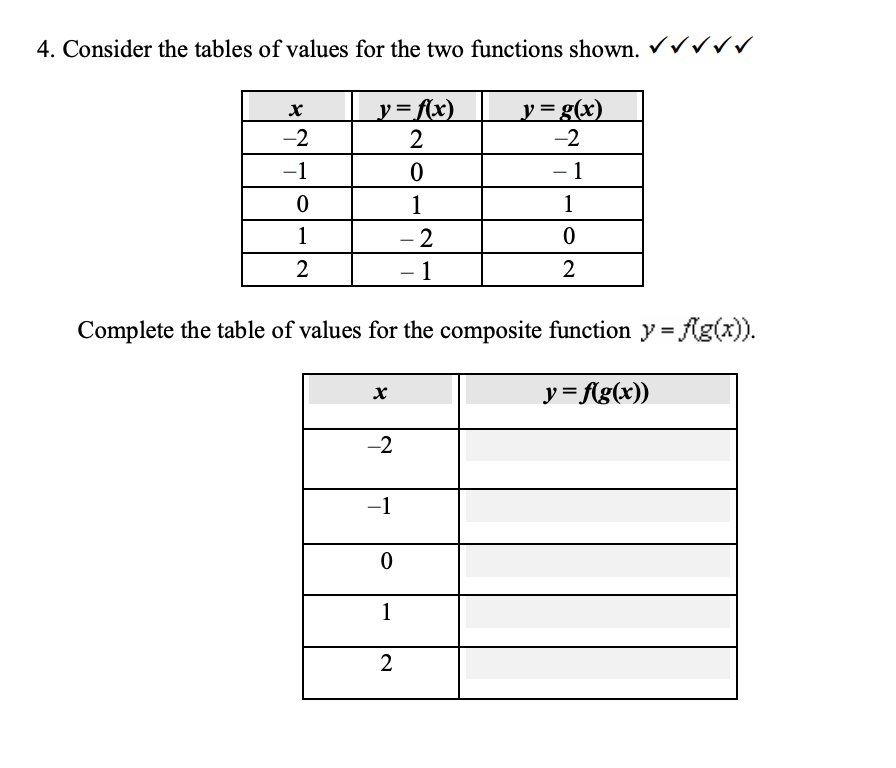



Solved 4 Consider The Tables Of Values For The Two Chegg Com




Complete The Table Of Values Below X 3 2 1 0 1 2 3 How The Graph Relates To Y 2x Y 2x Answer Brainly Com




Solved 2 Which Of The Following Is A Table Of Values For Chegg Com



A Fill In The Table Of Values For The Equation Y X Gauthmath




Mathswatch Quadratics Youtube




Solved Make A Table Of Values For The Equation Y X2 9 H Chegg Com




Graph Y X 2 1 Parabola Using A Table Of Values Video 3 Youtube




Solved Question 3 12 Pts A Graph And A Table Of Values Are Chegg Com




Graph Y X 2 1 Parabola Using A Table Of Values Video 3 Youtube




Fill In The Table Of Values For The Equation Y X 2 Brainly Com




Solved Make A Table Of Values Y X 11 H 3 2 1 0 1 2 Chegg Com
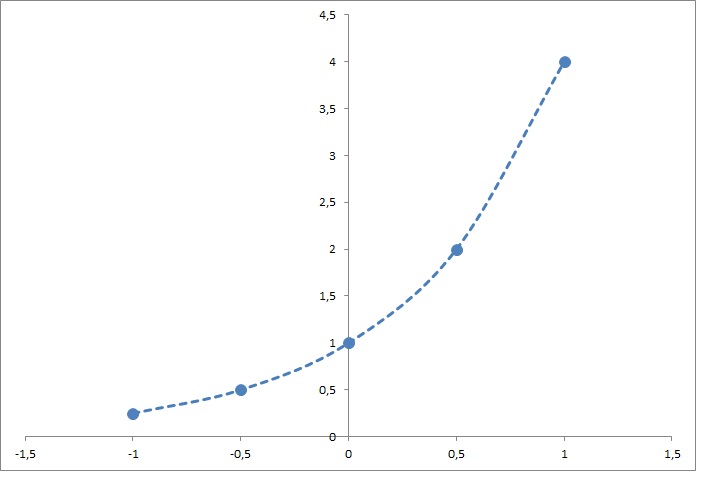



How Do You Graph Y 2 2x Using A Table Of Values Socratic
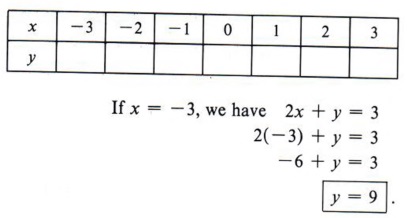



Graph Graph Inequalities With Step By Step Math Problem Solver




Solved Exercise 1 The Function X 2 Is Shown Graphed Chegg Com




Sec Graphing Quadratic Functions Graph The Following Equations On 1 Piece Of Graphing Paper Y X 1 Y 2x Ppt Download




Solved 3 Which Quadratic Relation Would Have This Table Of Chegg Com




Graph Of A Function
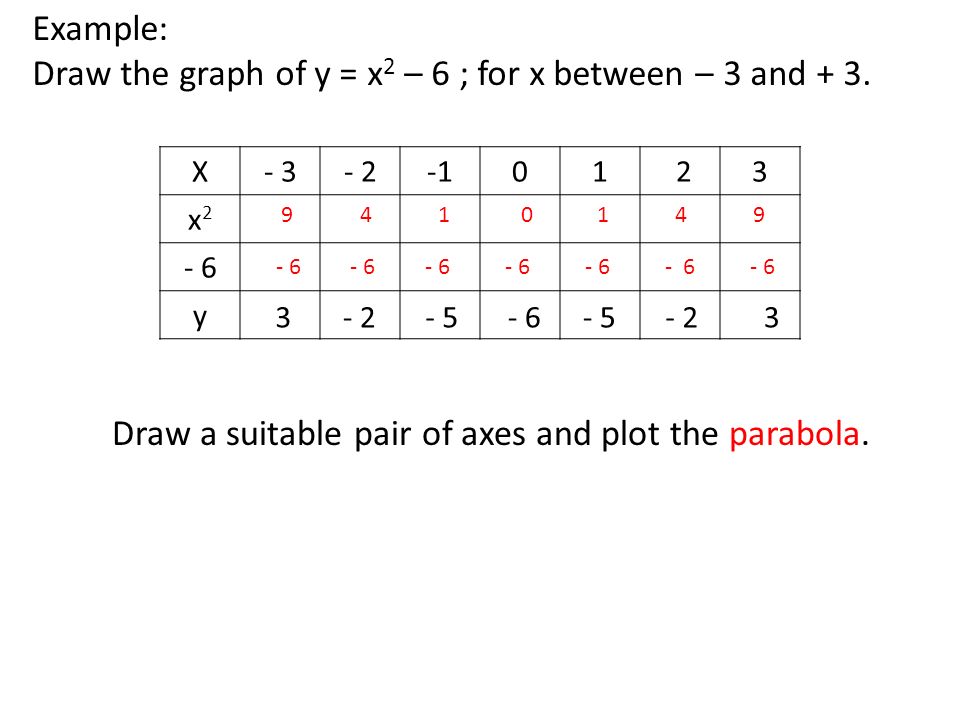



Quadratic Graphs Tables Of Values Ppt Download
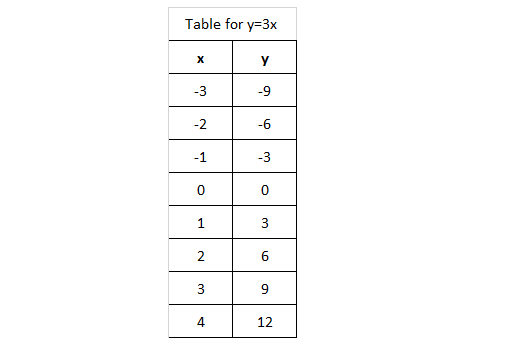



For The Following Function How Do I Construct A Table Y 3x And 3 X 4 Socratic



0 件のコメント:
コメントを投稿